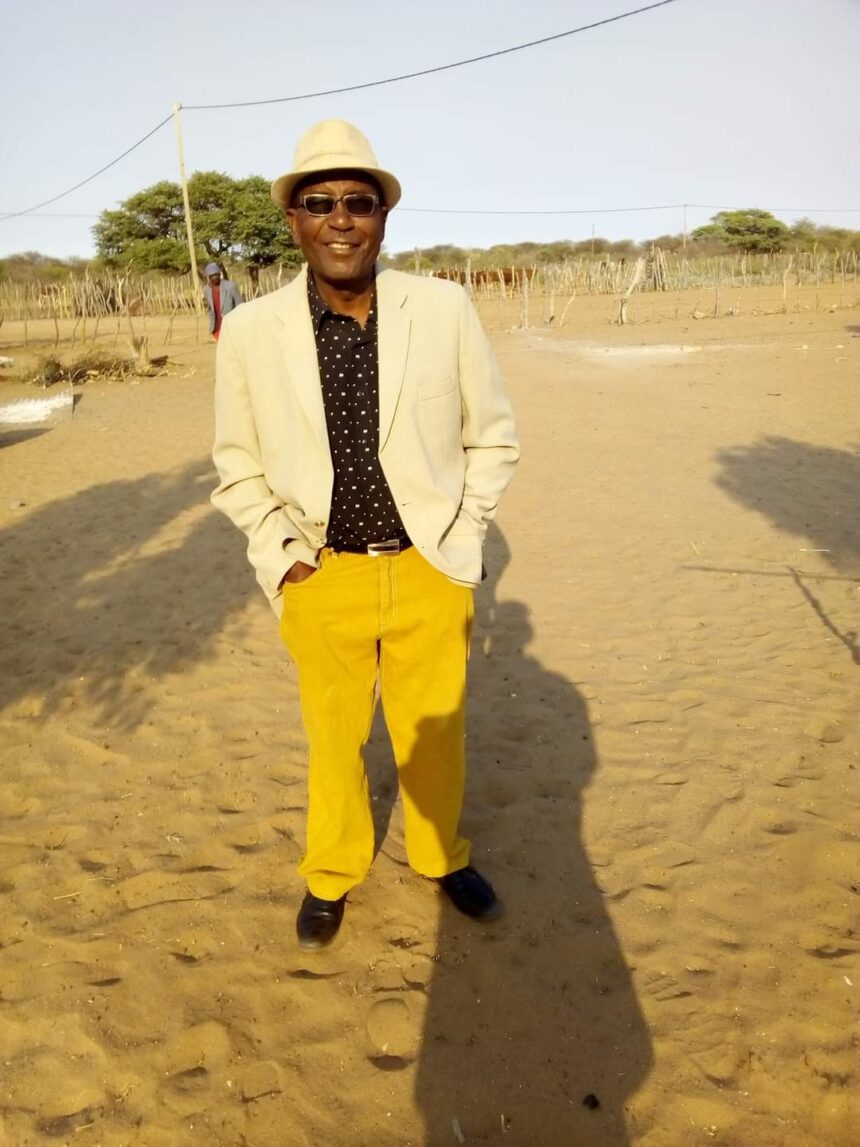Young football playing centre back Obed Muundjua was proudly, or rather comfortably, peddling on the nickname of internationally acclaimed South African football legend Lucas ‘Masterpieces’ Moripe. However, many might be wondering why a defender is compared to the former Pretoria Callies ball juggler and dribbling wizard.
Well, the ‘Namibian Moripe’, was a rare breed possessing all the required attributes and skills of a complete footballer. Bro ‘Moripe’ was very intelligent, versatile, comfortable on the ball, great skill and amazing close ball control, brilliant first touch, cool under pressure, and could read the game fairly well. He was indeed a complete package.
The football-playing skillful now-retired Hungry Lions cool as a cucumber defender originally hails from the vastly populated Omaheke region, and although he honed his football skills at Okakarara Secondary School, the gap-tooth boy only rose to prominence when he made his debut for unfashionable Katutura youthful outfit Hungry Lions Football Club in 1975.
The young, afro-haired defender was among a strong group of energetic young footies recruited from the higher learning institution to beef up the fragile Lions’ lineup alongside fellow students in the following sequence: beanpole striker Himeekua ‘Sigu’ Ngeendepi, bulky forward Nehemiah Kunouee ‘Bomber’ Heuva, bow-legged pocket-size winger Fritz Ndjavera, gangling defender Rakuha ‘Groovy’ Kaahangoro, and the boy with the delicious left foot Andrew Uaetongue Korupanda, aka ‘The Black Panther’.
Their arrival at the ambitious maroon and white strip outfit coincided with the club’s upsurge in the highly competitive Central Football Association League, Tier 2. The lower-tier league was comprised of some of the finest talent in the business, with teams such as Black Africa, African Stars, Acrow Chiefs, Tigers, Eastern Jumpers, Groovy Lions, Orlando Pirates, Firestone, Ramblers Katutura (Ramkat), and Soweto Chiefs all well represented.
‘Moripe’ formed the spine of the Lions, serving as a rear guard alongside the equally cool as a cucumber centre back Barminas Veraa Katuuo, veteran fullbacks Japhta Kauziremumue ‘Shakes’ Kandenge, John Uazapi ‘Long Tom Kamure’ Kaahangoro, and stylish versatile fullback cum-winger Abisai Tjauue ‘Shabby’ Rukero. Such was Moripe’s’ influence in the fast-emerging Lions’ rear guard that he was handsomely rewarded with the sacred captain’s armband.
The likeable soft-spoken defender shepherded the Brave Lions of Judah to triumphs in several high-profile knockout cup tournaments. He was without a shadow of a doubt the mainstay behind the Lions’ many forays, cleverly launching attacks from the back with his trademark defence, splitting passes from tight angles.
Like many young boys his age at the time, the afro-haired Moripe was very ambitious and eager to take his life and education to the next level, something that was clearly unattainable in apartheid South West Africa (SWA) as a result of racial segregation and oppression. Subsequently, he silently skipped his motherland after darkness had set, escaping to neighbouring Botswana as a political refugee in 1980, only to resurface in Francistown.
The calculated defender teamed up with fellow Namibians Harry Mutambo Tjipueja and former Hungry Lions teammate Issy Ndaka Murangi, turning out for leading local outfit Tafic Football Club before leaving Mochudi, a small village, to join local giants Mochudi Centre Chiefs Football Club.
The next stop was Gaborone, where he was to be reunited with fellow Namibian refugees in the colours of the gold and navy strip of Township Rollers Football Club. ‘Moripe’ immediately established himself as a vital cog in the heart of the Rollers defence and was one of the club’s most valuable assets.
A bird of passage, it was time for the football-playing Namibian refugee to find shelter elsewhere as he trekked up north-east to Kenya. Moripe joined leading Nairobi outfit Impala FC and later played for another local giant, the Leopards, alongside homeboy and former Hungry Lions Football Club teammate Issy Ndaka Murangi.
He successfully played his club football in Kenya between 1983 and 1989 before retreating to his motherland at the dawn of Namibia’s independence in 1990. “To be brutally honest, in terms of talent, quality, and technically, we are up there, but we somehow found ourselves wanting in the tactical aspect of the game simply because of poor, or rather, no existing, development programmes at youth level.
“Nonetheless, it was indeed an eye-opener for us those teams in Botswana and Kenya were by a decent stretch much better organised than Namibian clubs. We had good coaches who took us through the ropes, teaching us the basics of the game—something we have never been exposed to back home,” recalls Moripe.
Regrettably, a long-standing, niggling knee injury curtailed his progress as it relapsed, obliging him to call it quits while still at the pinnacle of his flourishing football career. Nevertheless, Moripe will go down in history as one of the most underrated but yet most talented centre backs of his generation.
Admittedly, the author had the privilege of playing alongside Moripe, sharing the dressing room with the centre back at the Brave Lions of Judah, and is therefore well placed to proudly nod in agreement that the afro-haired boy was indeed a rare gem and highly gifted.


